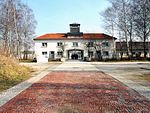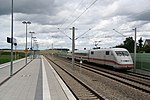Dachau, Bavaria

Dachau (German pronunciation: [ˈdaxaʊ]) is a town in the Upper Bavaria district of Bavaria, a state in the southern part of Germany. It is a major district town—a Große Kreisstadt—of the administrative region of Upper Bavaria, about 20 kilometres (12 miles) north-west of Munich. It is now a popular residential area for people working in Munich, with roughly 45,000 inhabitants. The historic centre of town with its 18th-century castle is situated on an elevation and visible over a great distance. Dachau was founded in the 9th century. It was home to many artists during the late 19th and early 20th centuries; well-known author and editor Ludwig Thoma lived here for two years. The town is known for its proximity to the Dachau concentration camp, operated by Nazi Germany between 1933 and 1945, in which tens of thousands of prisoners died.
Excerpt from the Wikipedia article Dachau, Bavaria (License: CC BY-SA 3.0, Authors, Images).Dachau, Bavaria
Pfarrplatz,
Geographical coordinates (GPS) Address Nearby Places Show on map
Geographical coordinates (GPS)
| Latitude | Longitude |
|---|---|
| N 48.260277777778 ° | E 11.434166666667 ° |
Address
Floriansbrunnen
Pfarrplatz
85221 , Etzenhausen
Bavaria, Germany
Open on Google Maps










